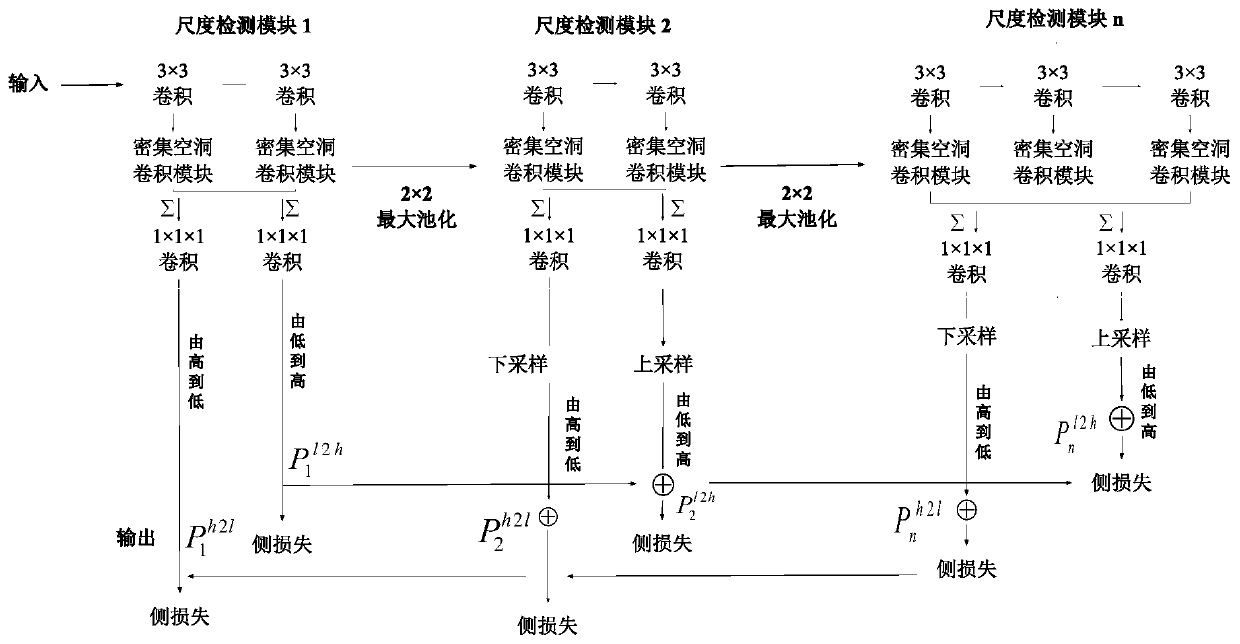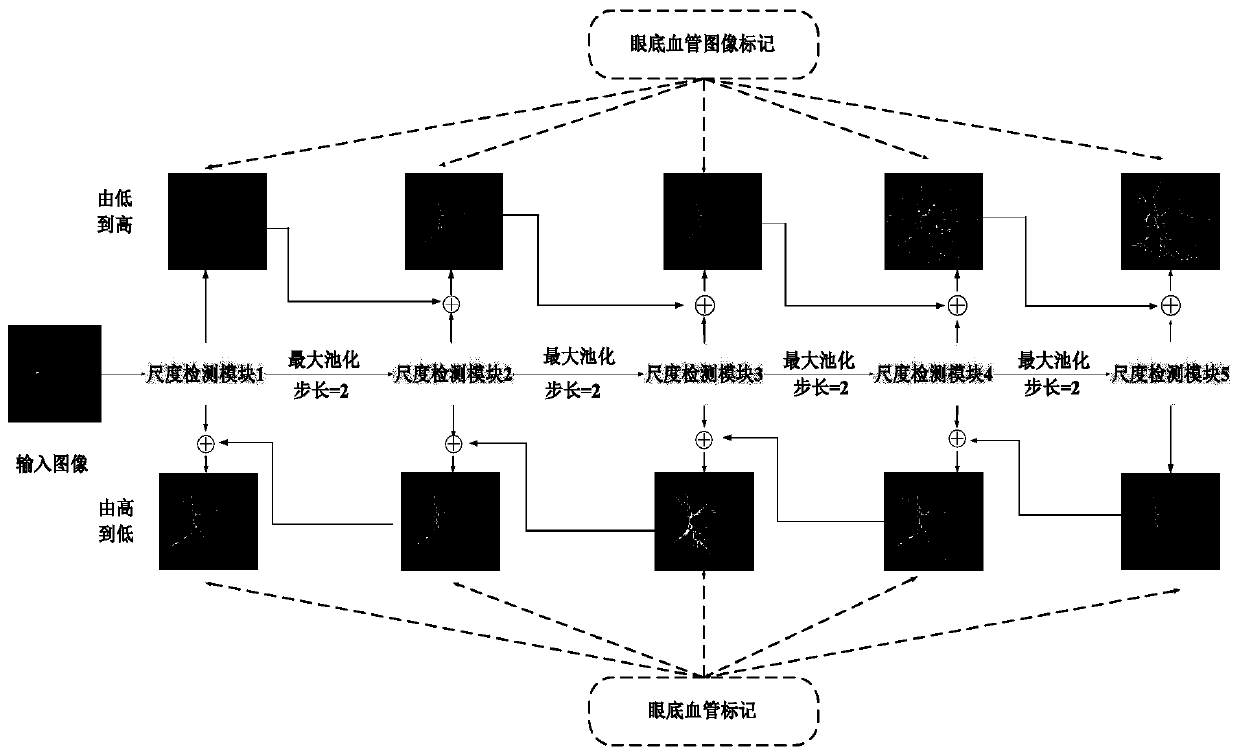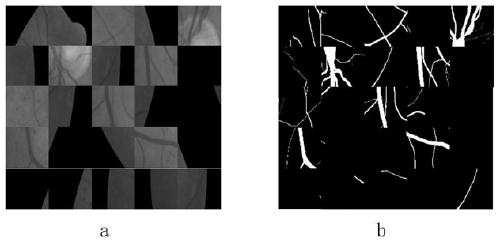Retinal vessel segmentation method based on symmetric bidirectional cascade network deep learning
A retinal blood vessel and cascade network technology is applied in the field of retinal blood vessel segmentation based on deep learning of symmetric bidirectional cascade network, which can solve the problems of high false positive rate and poor fundus image segmentation effect, achieve a good training process and save calculation. time, the effect of avoiding computational redundancy
- Summary
- Abstract
- Description
- Claims
- Application Information
AI Technical Summary
Problems solved by technology
Method used
Image
Examples
Embodiment Construction
[0042] The specific embodiment of the present invention will be further described below in conjunction with accompanying drawing and specific embodiment:
[0043] combine figure 1 and figure 2 , a retinal vessel segmentation method based on symmetric bidirectional cascaded network deep learning, comprising the following steps:
[0044] Step 1: Preprocess the fundus retinal image, and perform data enhancement on the input color fundus original image by cutting, changing contrast, rotating, zooming and translating to realize data set expansion. The specific steps include:
[0045] Step 1.1: Divide the fundus retinal image and its corresponding Groundtruth (standard blood vessel segmentation map) into 50×50 slices. The original image slices in the STARE dataset and the corresponding Groundtruth (standard blood vessel segmentation map) slices are as follows image 3 shown in a and 3b. For the STARE dataset, only one retinal image-generated slice is tested at a time, while th...
PUM
 Login to View More
Login to View More Abstract
Description
Claims
Application Information
 Login to View More
Login to View More - R&D
- Intellectual Property
- Life Sciences
- Materials
- Tech Scout
- Unparalleled Data Quality
- Higher Quality Content
- 60% Fewer Hallucinations
Browse by: Latest US Patents, China's latest patents, Technical Efficacy Thesaurus, Application Domain, Technology Topic, Popular Technical Reports.
© 2025 PatSnap. All rights reserved.Legal|Privacy policy|Modern Slavery Act Transparency Statement|Sitemap|About US| Contact US: help@patsnap.com



